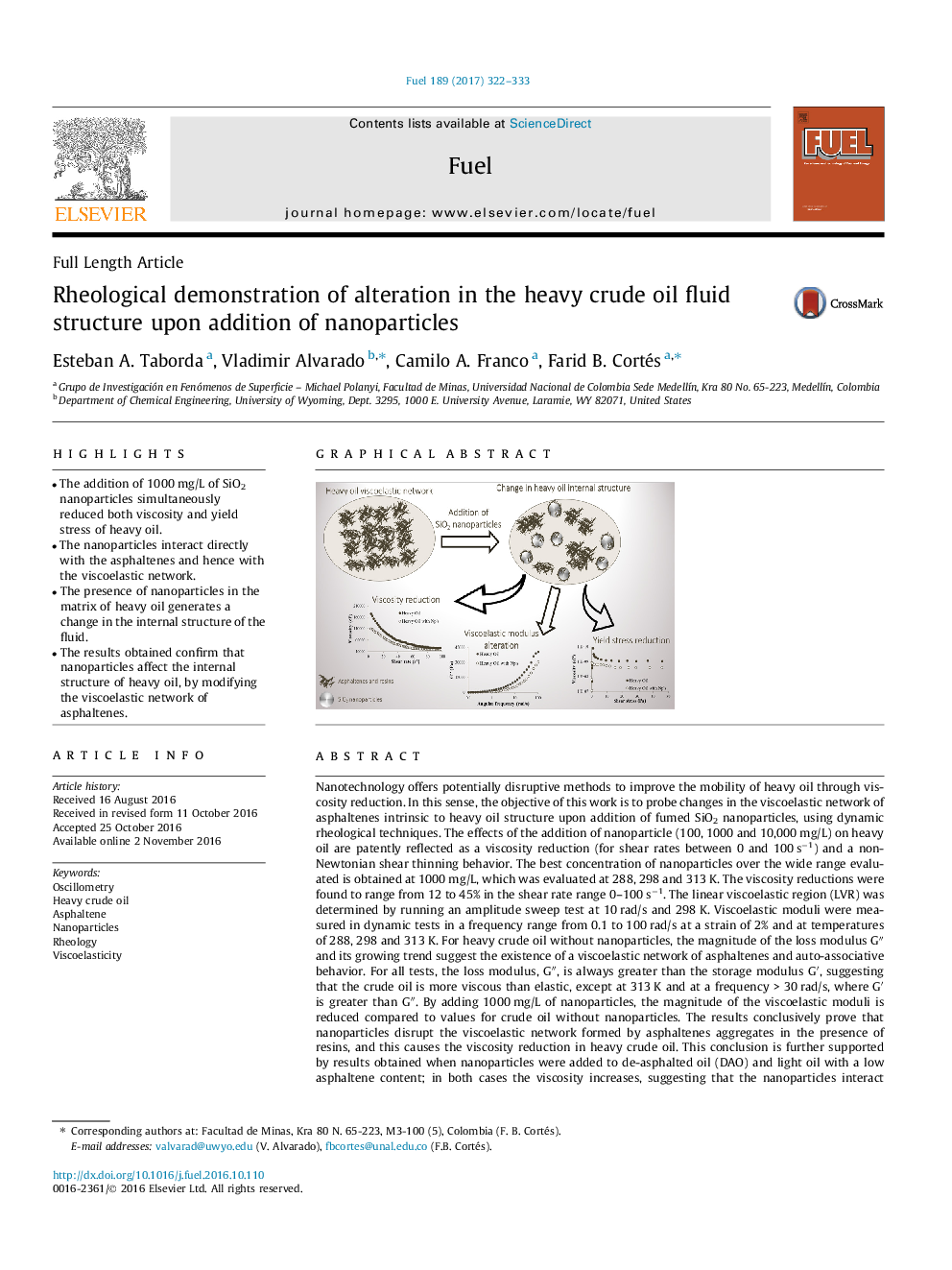| کد مقاله | کد نشریه | سال انتشار | مقاله انگلیسی | نسخه تمام متن |
|---|---|---|---|---|
| 6475694 | 1424975 | 2017 | 12 صفحه PDF | دانلود رایگان |
- The addition of 1000Â mg/L of SiO2 nanoparticles simultaneously reduced both viscosity and yield stress of heavy oil.
- The nanoparticles interact directly with the asphaltenes and hence with the viscoelastic network.
- The presence of nanoparticles in the matrix of heavy oil generates a change in the internal structure of the fluid.
- The results obtained confirm that nanoparticles affect the internal structure of heavy oil, by modifying the viscoelastic network of asphaltenes.
Nanotechnology offers potentially disruptive methods to improve the mobility of heavy oil through viscosity reduction. In this sense, the objective of this work is to probe changes in the viscoelastic network of asphaltenes intrinsic to heavy oil structure upon addition of fumed SiO2 nanoparticles, using dynamic rheological techniques. The effects of the addition of nanoparticle (100, 1000 and 10,000Â mg/L) on heavy oil are patently reflected as a viscosity reduction (for shear rates between 0 and 100Â sâ1) and a non-Newtonian shear thinning behavior. The best concentration of nanoparticles over the wide range evaluated is obtained at 1000Â mg/L, which was evaluated at 288, 298 and 313Â K. The viscosity reductions were found to range from 12 to 45% in the shear rate range 0-100Â sâ1. The linear viscoelastic region (LVR) was determined by running an amplitude sweep test at 10Â rad/s and 298Â K. Viscoelastic moduli were measured in dynamic tests in a frequency range from 0.1 to 100Â rad/s at a strain of 2% and at temperatures of 288, 298 and 313Â K. For heavy crude oil without nanoparticles, the magnitude of the loss modulus Gâ³ and its growing trend suggest the existence of a viscoelastic network of asphaltenes and auto-associative behavior. For all tests, the loss modulus, Gâ³, is always greater than the storage modulus Gâ², suggesting that the crude oil is more viscous than elastic, except at 313Â K and at a frequency > 30Â rad/s, where Gâ² is greater than Gâ³. By adding 1000Â mg/L of nanoparticles, the magnitude of the viscoelastic moduli is reduced compared to values for crude oil without nanoparticles. The results conclusively prove that nanoparticles disrupt the viscoelastic network formed by asphaltenes aggregates in the presence of resins, and this causes the viscosity reduction in heavy crude oil. This conclusion is further supported by results obtained when nanoparticles were added to de-asphalted oil (DAO) and light oil with a low asphaltene content; in both cases the viscosity increases, suggesting that the nanoparticles interact directly with asphaltenes in crude oil. Effects are observed if asphaltenes are present at high enough concentration.
98
Journal: Fuel - Volume 189, 1 February 2017, Pages 322-333
